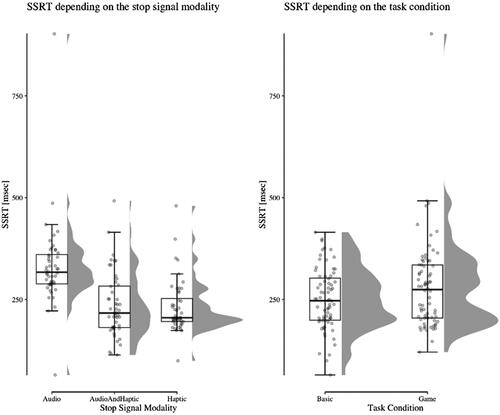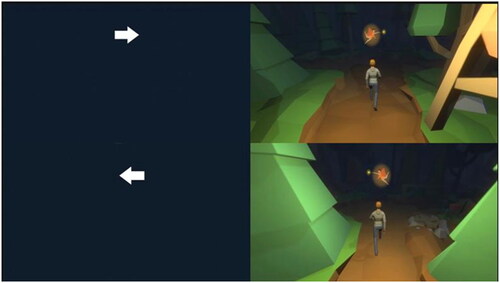Figures & data
Figure 2. SSRT scores depend on the signal modality and task condition. Results show that the tactile modality has lower SSRT’s than the auditory modality, suggesting faster response times for tactile. Additionally, the SSRT scores are lower for the basic condition of the task, indicating a better reactive inhibition than the game version. It should be noted that there is an outlier in the game condition, but even after the removal of that person, the results remain the same. Data from this individual was satisfactory overall, albeit their overall performance was subpar.

Table 1. Descriptive performance data split by task condition and stop-signal type.
Table 2. Means and standard deviations of the flow scale per task and stop signal type.
Table 3. Means and standard deviations of the intrinsic motivation Inventory (IMI) per task and stop signal type.
Data availability statement
All data can be accessed free of charge at https://osf.io/y7b8u/.

